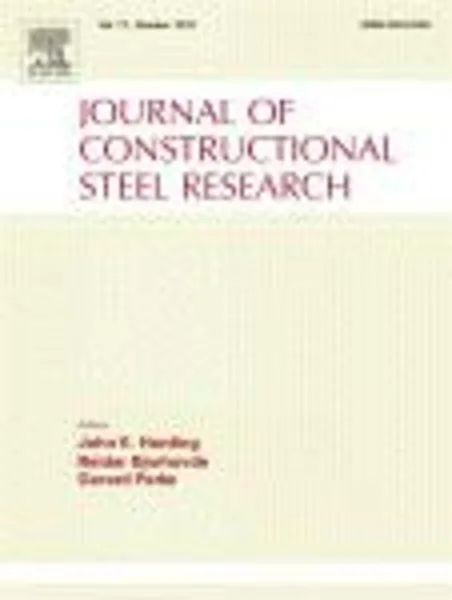-
response modification factor for steel moment-resisting frames by different pushover analysis methods
جزئیات بیشتر مقاله- تاریخ ارائه: 1394/01/01
- تاریخ انتشار در تی پی بین: 1394/01/01
- تعداد بازدید: 704
- تعداد پرسش و پاسخ ها: 0
- شماره تماس دبیرخانه رویداد: -
the earthquake loads imposed to the structures are generally much more than what they are designed for. this reduction of design loads by seismic codes is through the application of response modification factor (r-factor). during moderate to severe earthquakes, structures usually behave inelastically, and therefore inelastic analysis is required for design. inelastic dynamic analysis is time consuming and interpretation of its results demands high level of expertise. pushover analysis, recently commonly used, is however, a simple way of estimating inelastic response of structures. despite its capabilities, conventional pushover analysis (cpa) does not account for higher mode effects and member stiffness changes. adaptive pushover analysis (apa) method however, overcomes these drawbacks. this research deals with derivation and comparison of some seismic demand parameters such as ductility based reduction factor, rμ, overstrength factor, ω, and in particular, response modification factor, r, from capacity curves obtained from different methods of apa and cpa. three steel moment-resisting frames of 3, 9 and 20 stories adopted from sac steel project are analyzed. in pushover analyses for each frame, eight different constant as well as adaptive lateral load patterns are used. among the main conclusions drawn is that the maximum relative difference for response modification factors was about 16% obtained by the methods of conventional and adaptive pushover analyses.
مقالات جدیدترین رویدادها
-
استفاده از تحلیل اهمیت-عملکرد در ارائه الگوی مدیریت خلاقیت سازمانی و ارائه راهکار جهت بهبود
-
بررسی تاثیر ارزش وجوه نقد مازاد بر ساختار سرمایه شرکت های پذیرفته شده در بورس اوراق بهادار تهران
-
بررسی تأثیر سطح افشای ریسک بر قرارداد بدهی شرکت های پذیرفته شده در بورس اوراق بهادار تهران
-
بررسی تأثیر رتبه بندی اعتباری مبتنی بر مدل امتیاز بازار نوظهور بر نقد شوندگی سهام با تأکید بر خصوصی سازی شرکت ها
-
تأثیر آمیخته بازاریابی پوشاک ایرانی بر تصویر ذهنی مشتری پوشاک ایرانی (هاکوپیان)
-
بررسی پتروگرافی و ژئوشیمی پوش سنگ مخزن آسماری، میدان نفتی گچساران، فرو افتادگی دزفول
-
ساخت دارو با استفاده از ترکیب عصاره گیاه گزنه به همراه عسل جهت درمان بیماری ویروسی زونا و بررسی خواص ضد التهابی و میکرو ارگانیسمی آن
-
تخصیص منابع در محاسبات ابری سیار: یک مطالعه ی مروری
-
modified dispersion relation and classically forbidden s-wave emission across the horizon
-
determination of the effective stress parameter in unsaturated soils: an analytical formulation based on the soil water retention properties
مقالات جدیدترین ژورنال ها
-
مدیریت و بررسی افسردگی دانش آموزان دختر مقطع متوسطه دوم در دروان کرونا در شهرستان دزفول
-
مدیریت و بررسی خرد سیاسی در اندیشه ی فردوسی در ادب ایران
-
واکاوی و مدیریت توصیفی قلمدان(جاکلیدی)ضریح در موزه آستان قدس رضوی
-
بررسی تاثیر خلاقیت، دانش و انگیزه کارکنان بر پیشنهادات نوآورانه کارکنان ( مورد مطالعه: هتل های 3 و 4 ستاره استان کرمان)
-
بررسی تاثیر کیفیت سیستم های اطلاعاتی بر تصمیم گیری موفق در شرکتهای تولیدی استان اصفهان (مورد مطالعه: مدیران شرکتهای تولیدی استان اصفهان)
-
نقش تسهیلات بانک کشاورزی بر وضعیت اقتصادی کشاورزان شهرستان نیمروز
-
نقش طراحی محیطی در پیشگیری از جرم
-
مالکیت نهادی و بیش نمایی جریان نقد عملیاتی
-
مطالعه تطبیقی اشعار گنبد سفید نظامی با چهار نگاره منتخب با تکیه بر دیدگاه ژرار ژنت
-
بررسی رابطه عزت نفس و مولفه های آن با پیشرفت تحصیلی دانش آموزان متوسطه دوم




سوال خود را در مورد این مقاله مطرح نمایید :